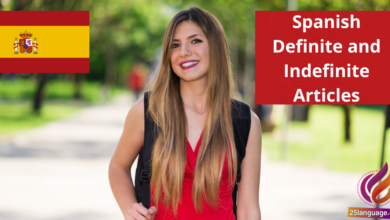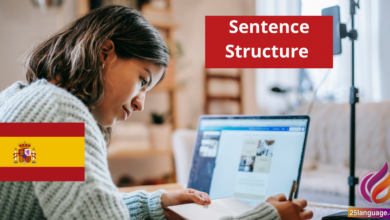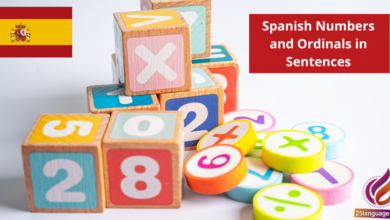Spanish Word Order in Statements and Questions

Mastering Spanish word order is a vital key to unlocking fluent communication! Unlike English, Spanish often places the subject, verb, and object in a distinct sequence, which can change the meaning and emphasis of a sentence. Whether you’re asking a question or making a statement, understanding these patterns will help you sound natural and confident. let’s dive into the captivating world of Spanish syntax and learn how to construct clear and dynamic statements and questions!
Understanding Spanish Sentence Structure: A Guide to Word order in Statements and Questions
In Spanish, the typical sentence structure follows a Subject-Verb-Object (SVO) order, similar to English. This means that in a statement such as “I eat an apple,” the subject (“I”) comes first, followed by the verb (“eat”) and the object (“an apple”). For example:
- Spanish: Yo como una manzana.
- English: I eat an apple.
In interrogative sentences, the word order can shift slightly to reflect a question. While English frequently enough relies on auxiliary verbs to form questions, in Spanish, simply inverting the subject and the verb can suffice. as an example:
- Spanish: ¿Comes tú una manzana?
- English: Do you eat an apple?
| Spanish Example | Rule | English Translation |
|---|---|---|
| Yo tengo un perro. | Subject-Verb-Object (SVO) | I have a dog. |
| ¿Tienes tú un perro? | Inverted Subject-Verb for questions | Do you have a dog? |
| Ella lee un libro. | SVO structure | She reads a book. |
| ¿Lee ella un libro? | Inverted for questions | Does she read a book? |
Navigating the Nuances of Spanish Syntax: Tips for Effective communication
Understanding the nuances of Spanish syntax is essential for effective communication, as sentence structure plays a critical role in conveying meaning. In Spanish, adjectives typically follow the nouns they modify, which can lead to different emphases compared to English. For instance,the phrase “un coche rojo” translates to “a red car”,where “rojo” (red) comes after “coche” (car). This structure can be reversed for stylistic reasons, such as saying “rojo coche”, though it may sound poetic or emphasize color instead of the object. Additionally, remember that spanish is frequently enough more flexible with the positioning of the subject in the sentence. Such as, both “Yo hablo español” (I speak Spanish) and “Hablo español” are correct, with the latter being more common for informal contexts.
When constructing questions in spanish, intonation and the use of inverted question marks are crucial. To form a question,the sentence structure often requires inverting the subject and verb. For instance, “Tú comes pizza” (You eat pizza) becomes “¿Comes tú pizza?” in the interrogative form. It’s also important to remember to use the opening inverted question mark at the beginning. Another notable aspect of Spanish syntax is the use of pronouns; they can attach to verbs or precede them. For example, “Dámelo” means “Give it to me”, where “dame” (give me) and “lo” (it) combine into one word, demonstrating both proficiency and fluency in grammar.
| Spanish Example | Rule | English Translation |
|---|---|---|
| un coche rojo | Adjectives usually follow nouns | a red car |
| ¿Comes tú pizza? | question formation with inversion and punctuation | Do you eat pizza? |
| Dámelo | Pronouns can attach to verbs | Give it to me |
| Yo hablo español | Subject can be omitted | I speak Spanish |
Mastering Word Order in Spanish: Clear examples and Practical Strategies
In Spanish, the typical sentence structure follows a Subject-Verb-Object (SVO) order, similar to English. Though, Spanish allows for greater flexibility in word order due to its inflectional nature, which is influenced by the subject pronouns and verb conjugations. Here are some key points to remember:
- In affirmative sentences: Subject + Verb + Object. For example:
María come manzanas. (Mary eats apples.) - For questions, the structure may switch: Verb + Subject + Object. For example:
¿Come María manzanas? (Does Mary eat apples?) - In negative sentences,the structure remains SVO,but “no” is placed before the verb:
María no come manzanas. (Mary does not eat apples.)
Furthermore,when using adjectives,they usually follow the nouns they describe in Spanish,which can differ from English. Here are additional aspects to consider:
| spanish Example | Rule | English Translation |
|---|---|---|
| La casa grande. | Adjective follows the noun. | The big house. |
| El perro negro es rápido. | Adjective follows the noun (general structure). | The black dog is fast. |
| es un libro interesante. | Adjective precedes when emphasizing a quality. | It is an fascinating book. |
Building Clarity in Spanish: The Art of Structuring Questions and Statements
In Spanish, structuring questions and statements correctly is essential for clear communication. Unlike English, where intonation can indicate a question, Spanish employs specific grammatical structures. To form a question in Spanish, the sentence structure typically starts with the verb, followed by the subject.Remember the use of inverted question marks at the beginning and regular question marks at the end of the question to signal interrogation. For example:
- ¿Cómo estás? (How are you?)
- ¿Dónde vives? (Where do you live?)
- ¿Tienes tiempo? (Do you have time?)
In contrast, creating statements requires a different approach. The typical structure in Spanish is subject-verb-object. Additionally, adjectives usually follow the noun they modify. Such as:
- Yo vivo en Madrid. (I live in Madrid.)
- Ella es ingeniera. (She is an engineer.)
- Los libros son interesantes. (The books are interesting.)
below is a comparison table to illustrate these concepts:
| spanish Example | Rule | English Translation |
|---|---|---|
| ¿Qué haces? | Question structure: Verb-subject | what are you doing? |
| Ella tiene un perro. | Statement structure: Subject-verb-object | she has a dog. |
| ¿Por qué estudias? | Question structure: Starts with verb | Why are you studying? |
| Los estudiantes son inteligentes. | Statement structure: Subject-verb-adjective | The students are intelligent. |
Future Outlook
hemos explorado juntos las reglas fundamentales del orden de las palabras en las oraciones y preguntas en español. Recuerden que, a diferencia del inglés, el español a menudo sigue un patrón diferente que puede incluir el verbo antes del sujeto, especialmente en preguntas.Comprendimos cómo colocar los adjetivos y los complementos en relación con los sustantivos, y también cómo estructurar preguntas de manera clara y efectiva.
es normal que al principio se sientan un poco desafiados por estos cambios, pero no se desanimen. La práctica constante es la clave para dominar el orden de las palabras y adquirir fluidez en español. Les animo a que utilicen estos conceptos en su práctica diaria, ya sea hablando con amigos, escribiendo en un diario o simplemente formando oraciones en voz alta.
Cada pequeña mejora que hagan les llevará un paso más cerca de la fluidez en español. ¡Sigan adelante, sigan practicando, y disfruten del emocionante viaje de aprender este hermoso idioma! ¡Hasta la próxima clase!





























